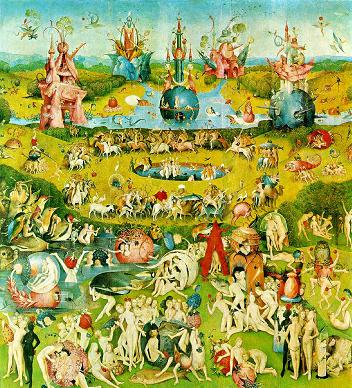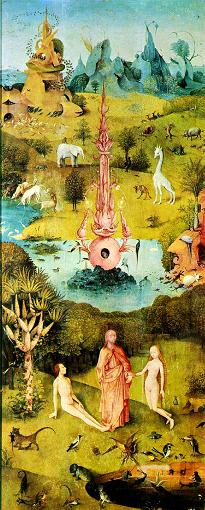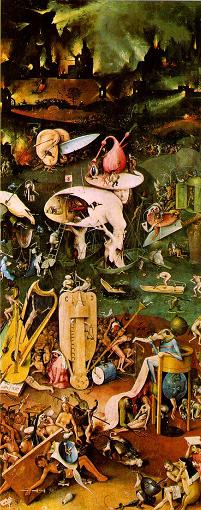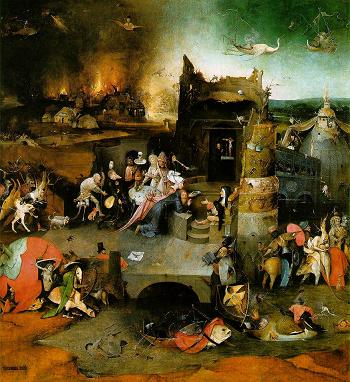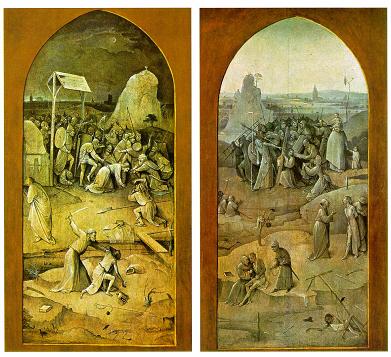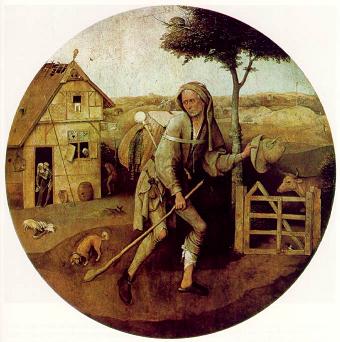"Thus it came about that the greatest Netherlandish artist of the period is not found among the adherents of the New Style but among those who, like Grunewald in Germany, refused to be drawn into the modern movement from the South. In the Dutch town of 's Hertogenbosch there lived such a painter, who was called Hieronymous Bosch. Very little is known about him. We do not know how old he was when he died in 1516, but he must have been active for a considerable time since he became an independent master in 1486. Like Grunewald, Bosch showed that the traditions and achievements of painting which had been developed to represent reality most convincingly could be turned round, as it were, to give us an equally plausible picture of things no human eye had seen. He became famous for his terrifying representations of the powers of evil. Perhaps it is no accident that the gloomy King Philip II of Spain, later in the century, had a special predilection for this artist, who was so much concerned with man's wickedness. Figures 22~30 show two wings from one of Bosch's triptychs he bought and which is therefore still in Spain. On the left we watch evil invading the world. The creation of Eve is followed by the temptation of Adam and both are driven out of Paradise, while high above in the sky we see the fall of the rebellious angels, who are hurled from heaven as a swarm of repulsive insects. On the other wing we are shown a vision of hell. There we see horror piled upon horror, fires and torments and all manner of fearful demons, half animal, half human or half machine, who plague and punish the poor sinful souls for all eternity. For the first and perhaps for the only time, an artist had succeeded in giving concrete and tangible shape to the fears that had haunted the minds of man in the Middle Ages.
Click to see a larger image
Garden of Earthly Delights (center panel)
c. 1504; Museo del Prado, Madrid
